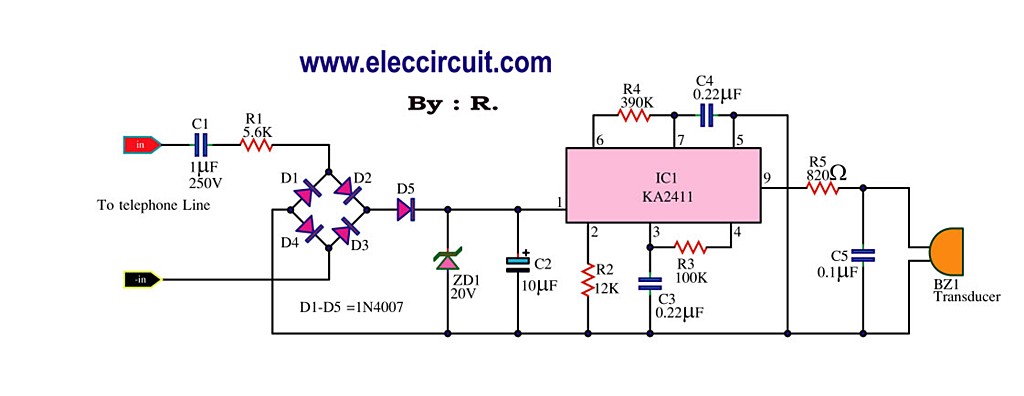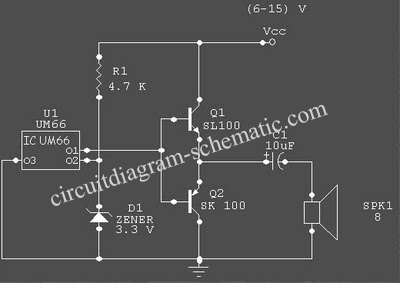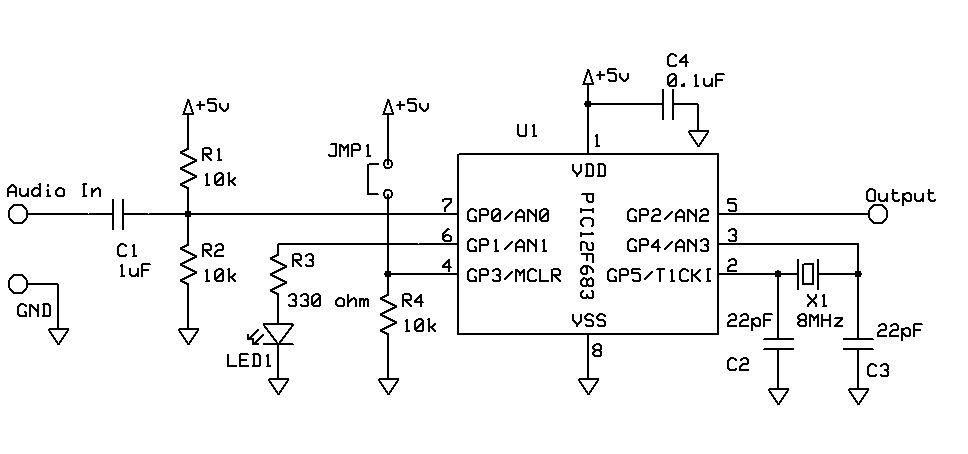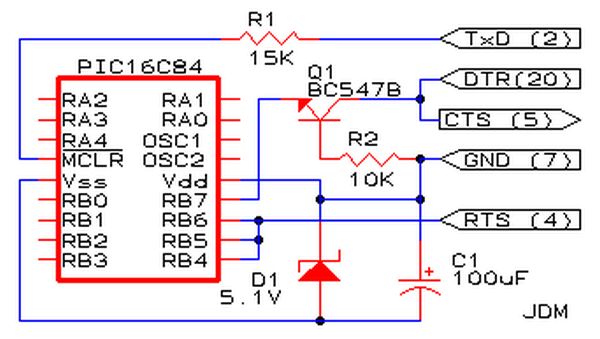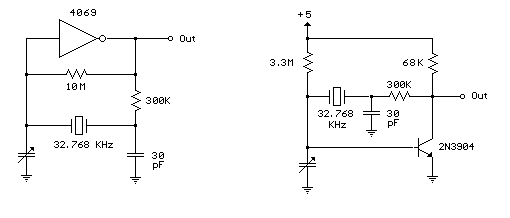
DTMF decoder using MT8870DE
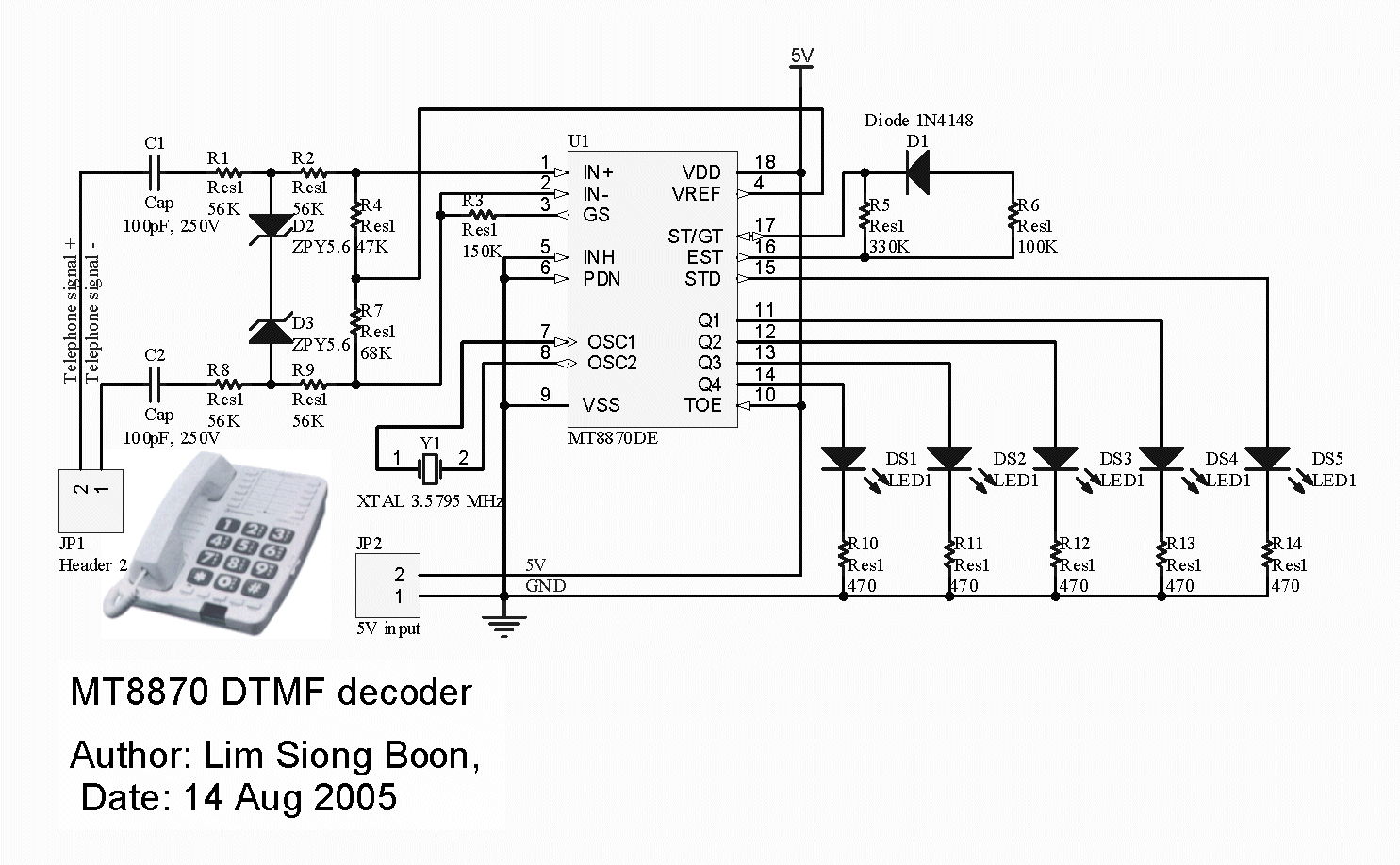
The phone system used to be operated by a human operator in a telephone exchange room. The caller would pick up the phone and give instructions to the operator to connect their line to the destination on the other end of the telephone. As more people found phone technology to be a useful communication tool, the reliance on human operators for line connections became too tedious. This led to the development of the dial tone method, which utilizes electronics and computers to establish connections, eliminating the need for manual phone line connections. Essentially, on the caller's side, there is a dial tone generator. When a key is pressed on the matrix keypad, it generates a unique tone. For instance, pressing the key '1' produces a tone that consists of a 697 Hz and 1209 Hz sine wave, while pressing the key '9' generates a tone formed by 852 Hz and 1477 Hz. The frequencies used in the dial tone system fall within the audible range, making them suitable for transmission over telephone cables. On the telephone exchange side, a decoder circuit is employed to translate the tone into a digital code. For example, the tone of 941 Hz and 1336 Hz is decoded as the binary output '1010'. This digital output is read by a computer, which acts as the operator to connect the caller's telephone line to the receiving telephone line. The telephone exchange center also generates a high voltage to the receiving telephone, causing it to ring and notify the receiving user. The project described focuses on building a decoder. This circuit can be interfaced with a computer, allowing for caller-computer interaction. Applications may include a computerized call receiving/diverting phone network system or remote control of home or office electrical appliances through the telephone.
The described telephone system represents a significant advancement in telecommunication technology, transitioning from manual operator intervention to automated electronic systems. The core of this system relies on dual-tone multi-frequency (DTMF) signaling, which is essential for the operation of modern telephony. Each key on the keypad corresponds to a specific frequency pair, allowing for distinct identification of the pressed key. The implementation of a dial tone generator and decoder circuit is critical, as it facilitates the conversion of analog signals into digital data that can be processed by a computer.
The circuit design for the decoder typically includes an analog-to-digital converter (ADC) to capture the incoming DTMF tones. The ADC samples the analog signals at a sufficient rate to accurately reproduce the frequency components. After sampling, the signals are processed through a digital signal processor (DSP) or a microcontroller equipped with DTMF decoding algorithms. These algorithms analyze the frequency components of the incoming signal, identifying the specific tone pairs and translating them into binary outputs corresponding to the pressed keys.
The output from the decoder can be interfaced with various computer systems, allowing for the development of applications that automate call handling. This could include features such as call forwarding, voicemail systems, or integration with smart home technologies, enabling control of electrical appliances via telephone commands. The ability to generate a high voltage signal to ring the receiving telephone adds another layer of functionality, ensuring that users are notified of incoming calls.
In summary, the evolution from human-operated telephone exchanges to automated systems has streamlined communication processes, leveraging electronic components and digital processing to enhance user experience and expand the capabilities of telephony. The development of a DTMF decoder circuit is a pivotal element in this transformation, enabling sophisticated applications that integrate telephony with computer systems and smart technologies.The phone system use to be operated by human operator in a telephone exchange room. The caller will pick up the phone, giving instruction to the operator to connect their line to the destination over the other end of the telephone. As more and more people find phone technology a useful communication tools, line connection use human operator would
be too tedious. Then came the dial tone method using electronics and computer to connect, eliminating the needs of manual phone line connection. Basically on the caller side, it is a dial tone generator. When a key is being pressed on the matrix keypad, it generate a unique tone. For example, if the key `1` is being press on the phone, the tone you hear is actually consist of a 697hz + 1209hz sine wave.
Pressing key `9` will generate the tone form by 852hz + 1477hz. The frequency use in the dial tone system is of audible range suitable for transmission over the telephone cable. On the telephone exchange side, it has a decoder circuit to decode the tone to digital code. For example, the tone of 941hz + 1336hz will be decoded as binary `1010` as the output. This digital output will be read in by a computer, which will then act as a operator to connect the caller`s telephone line to the receiving telephone line.
The telephone exchange center also generate a high voltage to the receiving telephone, so as to ring the telephone bell, notifying the receiving user. The project below, focus on building a decoder. This circuit can be interface to a computer, allowing caller to computer interaction. Application can be for example be a computerize call receiving/diverting phone network system. Home/Office electrical appliances remote through telephone. Wireless remote control. 🔗 External reference
The described telephone system represents a significant advancement in telecommunication technology, transitioning from manual operator intervention to automated electronic systems. The core of this system relies on dual-tone multi-frequency (DTMF) signaling, which is essential for the operation of modern telephony. Each key on the keypad corresponds to a specific frequency pair, allowing for distinct identification of the pressed key. The implementation of a dial tone generator and decoder circuit is critical, as it facilitates the conversion of analog signals into digital data that can be processed by a computer.
The circuit design for the decoder typically includes an analog-to-digital converter (ADC) to capture the incoming DTMF tones. The ADC samples the analog signals at a sufficient rate to accurately reproduce the frequency components. After sampling, the signals are processed through a digital signal processor (DSP) or a microcontroller equipped with DTMF decoding algorithms. These algorithms analyze the frequency components of the incoming signal, identifying the specific tone pairs and translating them into binary outputs corresponding to the pressed keys.
The output from the decoder can be interfaced with various computer systems, allowing for the development of applications that automate call handling. This could include features such as call forwarding, voicemail systems, or integration with smart home technologies, enabling control of electrical appliances via telephone commands. The ability to generate a high voltage signal to ring the receiving telephone adds another layer of functionality, ensuring that users are notified of incoming calls.
In summary, the evolution from human-operated telephone exchanges to automated systems has streamlined communication processes, leveraging electronic components and digital processing to enhance user experience and expand the capabilities of telephony. The development of a DTMF decoder circuit is a pivotal element in this transformation, enabling sophisticated applications that integrate telephony with computer systems and smart technologies.The phone system use to be operated by human operator in a telephone exchange room. The caller will pick up the phone, giving instruction to the operator to connect their line to the destination over the other end of the telephone. As more and more people find phone technology a useful communication tools, line connection use human operator would
be too tedious. Then came the dial tone method using electronics and computer to connect, eliminating the needs of manual phone line connection. Basically on the caller side, it is a dial tone generator. When a key is being pressed on the matrix keypad, it generate a unique tone. For example, if the key `1` is being press on the phone, the tone you hear is actually consist of a 697hz + 1209hz sine wave.
Pressing key `9` will generate the tone form by 852hz + 1477hz. The frequency use in the dial tone system is of audible range suitable for transmission over the telephone cable. On the telephone exchange side, it has a decoder circuit to decode the tone to digital code. For example, the tone of 941hz + 1336hz will be decoded as binary `1010` as the output. This digital output will be read in by a computer, which will then act as a operator to connect the caller`s telephone line to the receiving telephone line.
The telephone exchange center also generate a high voltage to the receiving telephone, so as to ring the telephone bell, notifying the receiving user. The project below, focus on building a decoder. This circuit can be interface to a computer, allowing caller to computer interaction. Application can be for example be a computerize call receiving/diverting phone network system. Home/Office electrical appliances remote through telephone. Wireless remote control. 🔗 External reference
